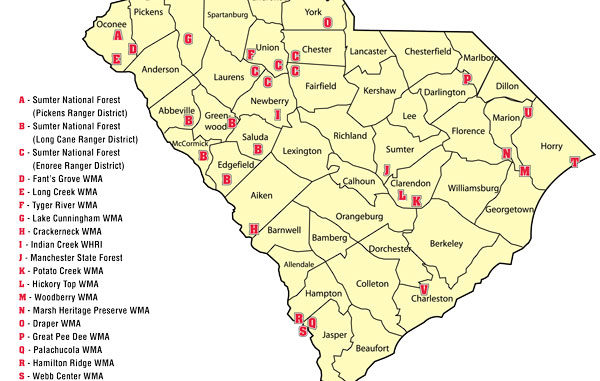
Public hunting opportunities abound throughout the Palmetto State for everything from ducks to deer, bobwhites to bunnies. But some areas will be better than others.
Not every hunter has access to private land. With development encroaching on wilderness at an alarming rate, there’s less acreage out there available for the hunter who doesn’t have the right connections.
But you can’t blame the S.C. Department of Natural Resources if you’re not in a tree stand somewhere this fall or a duck blind somewhere this winter. Land under the control of the state is within reasonable driving distance of almost every residence in the Palmetto State, with some public-hunting areas providing opportunities that are on par with some of the best private tracts.
The SCDNR manages many tracts of public lands with permit-hunting only, with most application deadlines already past, but there remains plenty of acreage where hunters need only the proper licenses and a little knowledge of the ground to have a decent shot at bringing home the venison or the makings of a quail pie, rabbit stew or duck ka-bobs.
“When you think about it, there is land available for hunting opportunities in all four of our regions,” said Billy Dukes, the small-game project leader for the SCDNR.
Deer hunting is divided between general WMAs and those in which hunting is restricted to permit-only draw hunts. Small-game and waterfowl hunting is managed on many WMAs, with some having a restricted number of days, and with waterfowl hunts often being permit-only.
Waterfowl hunting on WMAs centers on wood ducks, which are managed with a 3-birds-per-day bag limit. Category II WMAs are not included in the draw-hunt program, but most are open only on certain days. Most offer walk-in access, but scouting is recommended before trying to find a location to set up in pre-dawn hours.
Upstate
Deer
Sumter National Forest. In the words of Charles Ruth, the big-game project leader for the SCDNR, “The Sumter National Forest dominates the Upstate.”
The national forest covers more than 370,000 acres in three ranger districts (Long Cane, Enoree and Pickens), with acreage in 11 different counties. If finding a place to hunt sounds like a daunting task, you can do a lot of work without leaving the front of your computer.
“With a little leg work, no hunter in the world won’t be successful,” Ruth said. “Maps are fairly detailed, and they show all the forest service roads. Then, you just need to do a little legwork. If you’ve got any experience hunting, you know what you’re looking for.
“The key is locating drainages where you’ve got hardwoods. In September and October, you start looking for acorns.”
The Pickens Ranger District covers 85,000 acres in the mountains of Oconee County. The Enoree Ranger District covers 170,000 acres in Newberry, Union, Chester, Fairfield and Laurens counties — the heart of the Upstate. The Long Cane Ranger District covers 120,000 acres in Saluda, McCormick, Greenwood, Edgefield and Abbeville counties.
“The population might not be as high as it is on private lands, but you’ve got a tremendous amount of land, and it’s not all in 10,000-acre blocks. The habitat is very comparable to private land,” Ruth said. “The forest service has gotten through a lot of the complaints about not cutting. They’re doing a lot more active management, thinning the timber. That was one of the problems — dealing with mature stands of pine, 25 years old, that were less productive.”
Hunting is open six days a week (not Sundays!). For information, call 864- 638-9568 (Pickens Ranger District), 803-276-4810 (Enoree Ranger District), 803-637-5396 (Long Cane Ranger District).
Fant’s Grove WMA. Covering 7,444 acres in Anderson, Oconee and Pickens counties, almost all of Fant’s Grove is owned by Clemson University, and it is actively managed as part of the school’s forestry program. The WMA borders Lake Hartwell, and it is managed under quality-deer regulations.
What’s the catch? Gun hunts are permit-only, but they’re limited to late in the season. Ruth said Fant’s Grove is among the best WMAs in South Carolina for archery hunts, with a season that opens Oct. 15 and lasts through Dec. 22. Bucks must have at least four points on one side or a 12-inch minimum spread.
“The gun hunt is a draw hunt, but it’s late — after the students have gone,” Ruth said. “Archery is not a draw hunt, and it’s an extensive period of time. Fant’s Grove is a much more actively maintained university property.”
Small Game
Long Creek WMA. Covering 500 acres near Long Creek in Oconee County, this WMA is a former apple orchard maintained in early successional habitat through burning and disking. Long Creek offers excellent opportunities for rabbits, and it has some quail.
“Long Creek is closed for big-game hunting after Thanksgiving so that small-game hunters can utilize it,” said Tom Swayngham, SCDNR’s regional wildlife coordinator. “The history of use on this property makes (it) different from other ground in this mountainous area, where habitat tends to be too sloped for good small-game habitat.”
Fant’s Grove WMA in Anderson County has plenty of hardwood bottomlands because of its borders with Lake Hartwell and with 18-Mile Creek winding through the property.
The hardwood bottoms make for some pretty good rabbit-hunting opportunities. The mixture of mature pine and oak woodlands that are managed with prescribed fire and thinning are not as good for quail hunting, but the best chance for success would come along the edge of the agricultural fields that are maintained.
Sumter National Forest. According to Billy Dukes, SCDNR’s small-game project supervisor, the big national forest is not to be overlooked for small game in Abbeville, McCormick and Edgefield counties. Upland habitat restoration projects have been underway there for years, and project signage exists along roads in the areas.
Waterfowl
Tyger River WMA. This 84-acre area of “moist-soil management” is located in Union County and is open for hunting on Saturdays during the regular duck season.
“This WMA offers walk-in access, and it’s about 300 yards to the shallow hunting area,” said Swayngham. “Mainly wood ducks are found here, but we do get other species occasionally here in the Upstate.”
No boat is necessary for hunting Tyger River WMA.
Lake Cunningham WMA. A 100-acre backwater marsh in Greenville County, it is open for hunting on Wednesday mornings.
“Hunters have walk-in access here, and the quarry is mainly wood ducks, but a mallard and some green-winged teal are not unheard of,” said Dean Harrigal, the SCDNR’s waterfowl program coordinator.
Midlands
Deer
Crackerneck WMA. This 10,470-acre area is owned by the U.S. Department of Energy and managed by SCDNR.
Early-season hunting is limited to an Oct. 1-2 archery hunt and an Oct. 8-9 blackpowder hunt. Gun season runs on Fridays and Saturdays from Oct. 15-Jan. 1, 2011. Hunting will be allowed on Thanksgiving Day, but not on Christmas Day.
SCDNR has been managing Crackerneck under trophy rules — four or more points on at least one antler or a 12-inch minimum spread — and it seems to be working. According to SCDNR, three bucks taken in 2009 beat the 125-point minimum for inclusion into the state record book.
Hunters must check in and out of Crackerneck; all game must be checked before leaving (hours are 4:30 a.m.-8:30 p.m., changing to 7:30 p.m. after the time change away from Daylight Savings). The WMA, off SC125 near Jackson in Aiken County, is open for scouting only on Saturdays in September.
“Crackerneck has got bottomland and upland, and it’s got a number of acres in the (Savannah) river flood plain,” Ruth said.
SCDNR has done some extensive habitat management on Crackerneck, including 30 miles of firebreaks, numerous wildlife openings and heavy tracts of pine timber that have been thinned as needed and burned on a 3-year rotation.
Crackerneck also has a 3,000-acre roadless section of Savannah River swamp. The 7,500-acre upland section has an extensive road network that makes access to hunting areas much better. Despite that, SCDNR publications indicate that hunting pressure has diminished over the past five years, and the WMA is rarely crowded.
Small Game
Indian Creek Wildlife Habitat Restoration Initiative lies in the Sumter National Forest in Newberry County.
While the entire national forest is open to the public for small-game hunting, there has been a focus at Indian Creek over the past four years to re-establish the quail population.
The U.S. Forest Service has completed some aggressive thinning and followed it up with prescribed burning to promote the growth of early successional plants.
Manchester State Forest. Bland WMA in Sumter County and Oakley WMA in Clarendon County are both in the state forest, where a focus on quail and songbirds that share habitat is under way. Oakley features working farmland, with 119 acres have field borders and supplemental plantings — perfect for rabbits and quail.
Crackerneck WMA. Aggressive timber thinning over the past five years, followed up with prescribed burning, has promoted small-game populations on the Aiken County tract. Bottomland hardwoods remain along the Savannah River, and powerline right-of-ways present open ground.
“Rabbit populations are abundant, and quail hunting is better than average,” Dukes said.
Small-game hunting is open on Fridays and Saturdays through the normal Game Zone 3 seasons, as well as Thanksgiving, but no hunting is allowed before Oct. 15 or after Feb. 26.
Waterfowl
Potato Creek WMA is a 50-acre flat off of Lake Marion that is open for hunting on Wednesday and Saturday mornings. No management takes place on this acreage, but hunters can key on rainfall in the area and the lake levels that Santee Cooper maintains — both of which can dictate waterfowl traffic in the area.
Hickory Top Greentree WMA is a 400-acre reservoir in Clarendon County that is open for hunting on Saturday mornings. The area can be flooded by SCDNR, and an average of 500 woods ducks are harvested there annually.
Pee Dee
Deer
Woodberry WMA. This 25,668-acre Heritage Preserve tract in Marion County was obtained by SCDNR in 2006. It was formerly International Paper Company land and is another property that is managed under trophy regulations: four points or better on one antler or a 12-inch minimum spread.
“This is a fairly new property for us,” Ruth said. “When IP had it, they had a history of selective (deer) harvest, and we kept it that way when we got it.”
Gun season runs Oct. 18-Jan. 1, with nine either-sex days. Hunters must register at a kiosk at the entrance, which is off SC 378 near Daviston.
The WMA has an extensive road system, as well as access from the Great Pee Dee and Little Pee Dee rivers. The habitat is a mixture of bottomland hardwoods, swamps and upland longleaf and loblolly pines.
Marsh WMA. Ruth said the Marsh Heritage Preserve WMA offers many of the same opportunities as Woodberry, and it’s in the same general area of Marion County.
The WMA covers 8,560 acres and has an extensive network of roads, but it can also be accessed from the Great Pee Dee River. Again, bottomland and upland hardwoods and pines are the primary habitat. Hunters must register at a kiosk near the main entrance, which is off SC 9 approximately seven miles north of Gresham.
SCDNR began managing the property in 1991 and took over ownership in 2005. It is not managed under trophy regulations.
Small Game
Draper WMA. Of the 806 acres in this York County WMA, approximately 386 acres are open, converted from pastureland into small-game habitat, with the tract being managed specifically for small game.
“It offers good opportunities for rabbit and pretty fair opportunities for quail,” Dukes said. “We sprayed the fescue grass with herbicide to kill it and planted native, warm-season grasses to replace them.
The property is managed with frequent prescribed fire, with York County contributing to the funding of its management.
Marsh WMA. This Marion County property is under active timber management, and Dukes said it is “better than average for public-land hunting.”
The tract is marked by wildlife openings throughout the woods, with good rabbit-hunting expected, along with fair quail hunting.
Woodbury WMA. Talk about wide-open spaces. “There should be no reason for hunters crowding one another on this property,” Dukes said. “This WMA is a work in progress for me as we balance small-game management with the industrial timber management plan that came with this property.”
The WMA covers more than 25,000 acres along the Pee Dee and Little Pee Dee rivers.
Waterfowl
The Little Pee Dee River WMA lies in Marion and Horry counties and includes 7,000 acres of river swamp. Only open on Wednesday mornings, the availability of wood ducks will fluctuate with the acorn crop and the amount of rain and flooding that occur.
The Great Pee Dee Heritage Preserve WMA has 2,500 acres of river swamp in Darlington County. Wood ducks can be found in the hardwood bottomlands all season long.
Lowcountry
Deer
Hamilton Ridge WMA. Gun hunting on the most of the best Lowcountry WMAs is limited almost exclusively to draw permit hunts, but plenty of opportunities exist for archers and hunters who like to take blackpowder weapons into the woods, and Hamilton Ridge in Hampton County is a perfect example.
Archery hunts run Sept. 20-25, Oct. 25-30, Nov. 8-13 and Dec. 9-11. Archery/blackpowder hunts are Nov. 1-6. Bucks are managed with requirements of a 12-inch minimum spread and at least four points on one antler.
“Hamilton Ridge is one of our newest properties, and it’s managed very actively,” Ruth said. “The draw deer hunts are very popular.”
Palachucola WMA. Another relatively new WMA in Hampton and Jasper counties in the Lowcountry, Palachucola covers 6,757 acres and is managed similarly to Hamilton Ridge — with draw-permit gun hunts but open archery and blackpowder seasons.
Bucks are managed with a 12-inch minimum spread and at least four points on one antler. Archery hunts run Sept. 29-Oct. 16, and archery/blackpowder hunts are Dec. 16-18.
Small Game
Lewis Ocean Bay Heritage Preserve WMA. Think the wildfire a while back had a positive or negative effect on small-game populations? Dukes said the habitat has recovered from the catastrophic wildfire enough for him to recommend it as a destination for rabbit hunters.
“The red-cockaded woodpeckers that reside there require old-growth pines and frequent fire, and the same habitat is required by quail,” Duke said.
The property, in Horry County, covers 9,690 acres and is a diverse mixture of habitat that includes Carolina bays and pine flatwoods.
Webb Center. Covering more than 5,866 acres, this WMA is a huge swath of Lowcountry perfect for small-game hunters.
The Webb WMA was the first public-hunting land purchased by South Carolina — back in 1946. Quail and rabbit habitat are already at premium levels, with agricultural plantings, supplemental wildlife plantings, annual grain patches of millet, sorghum, sesame and Egyptian wheat. An active timber-management plan even calls for the creation of brushpiles to create more home for cottontails.
Rabbit and squirrel hunting runs the entire small-game season on the Webb Center, except there is no afternoon hunting on Mondays and Fridays, and no Tuesday and Saturday morning hunting from Sept. 14-Dec. 31.
“It is big and well-managed,” Dukes said.
Quail hunters are limited to eight days: Jan. 8, 12, 22 and 26 and Feb. 2, 5, 16 and 19. The limit is eight per day, and quail hunters must pick up and return data cards to the on-site kiosk.
Waterfowl
Dungannon WMA in Charleston County is 301 acres of forest and old grown-up rice fields, open to waterfowl hunters on Wednesday mornings. Wood ducks are the main species encountered, but rumors of a mallard hole still linger on this old, plantation property.
Hunters have foot access, but a walk of 20 minutes into the property has moved some waterfowl hunters to bicycles. Standing on the edge of the cypress swamp to shoot is fine, but a canoe is warranted it one wants to explore the center of the swamp.
Webb Center WMA offers excellent wood-duck shooting in the flooded, swampy areas. Access can be tough, however, with a woodland trek often ending with the need for a canoe to explore the swamp more fully. But when the Savannah River is down, hunters can fire from solid ground if they’ve scouted out which pockets woodies are using. Carry a compass and duck strap when hunting Webb.

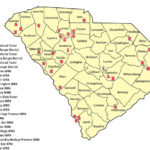
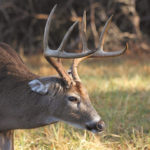
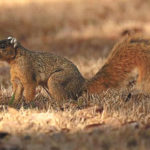
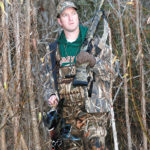
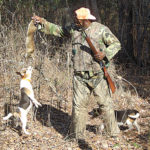


Be the first to comment